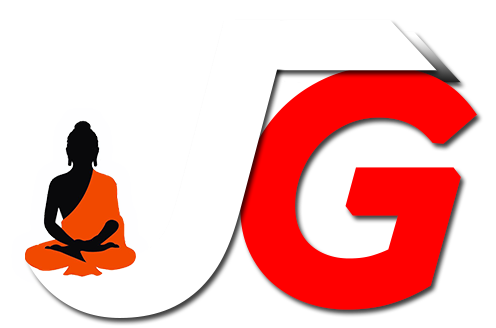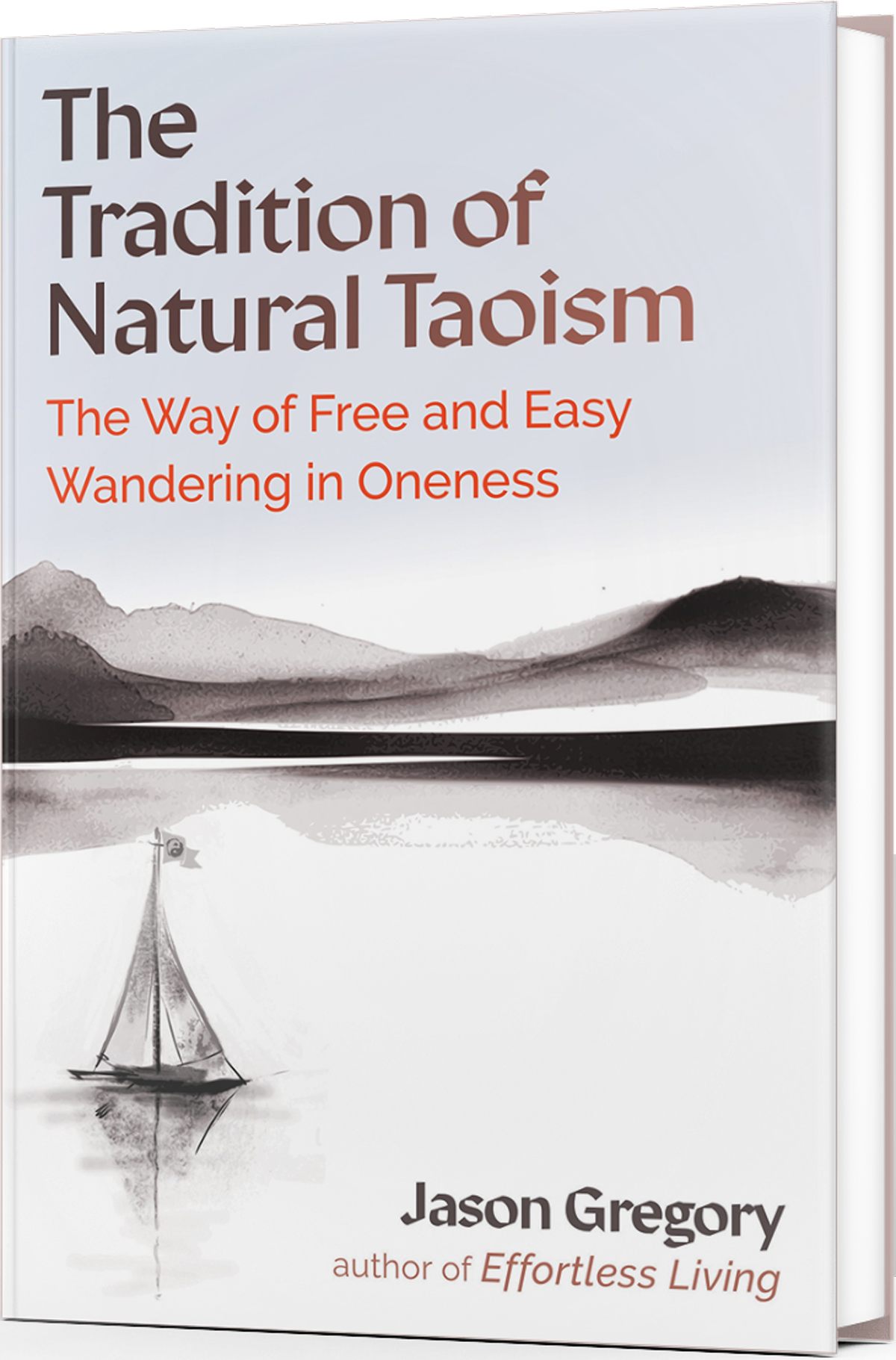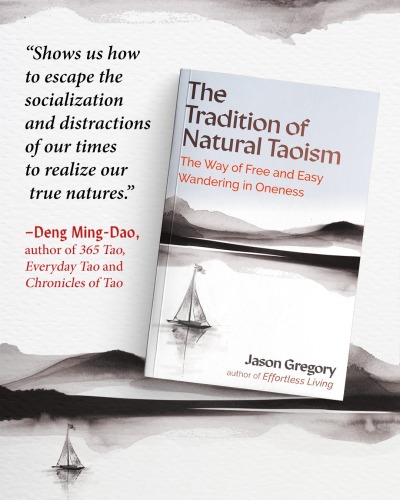The Dissolution of Identity
To be free in this life, we must unlearn what we’ve gained and relearn what we’ve lost. What you will read about in the following chapters is a relearning of the natural way that has been eclipsed by what we’ve gained, the process of socialization. Then, and only then, will we become a bona fide zhenren (genuine person/Taoist sage). This means, though, that we have to examine and dismantle our identity as it is the byproduct of socialization. This is one of the most uncomfortable processes, but a necessary evil on the spiritual path, especially in Taoism.
One of the common misconceptions of Taoism in the West is that it is a path solely focused on flow and the art of living without any need for getting our hands dirty. This view is a very airy-fairy perspective of Taoism. It excludes the very thing that needs to dissolve to be in flow and embody the art of living—identity. With a strong sense of identity, none of the Taoist principles can be lived.
Some of these inane views of Taoism come from incorrect translations and other translations with no explanation. For example, someone will read in the Tao Te Ching about unlearning and think it is about unlearning what they’ve learned, such as education and also couple that with an unlearning of trying to know the Tao. And both may be necessary, and in part true, but they are not the whole puzzle. What unlearning really means in the Tao Te Ching is the unlearning of your identity, that thing within us that is the accumulative product of socialization. As discussed in previous chapters, the identity or ego acts as a fundamental blockage to the fundamental forces and flow of Tao.
The fear people have concerning the dissolution of identity is that they incorrectly believe they won’t function without an identity, as if there is nothing intrinsically there without the ego. This is simply not true and something you will learn later in this book. People in the modern world, and especially Westerners, are often more favorable toward Taoism and Yoga, but they are more suspicious of Advaita Vedanta and Buddhism because of the inaccurate belief that the underlying premise of the dissolution of self of the latter two traditions doesn’t exist in the former two. This is simply untrue.
To be sure, the dissolution of the ego, self, or identity is the common principle and goal of many Eastern spiritual traditions. The methods and philosophy to achieve that end are different among the traditions and explained differently, but the principle is the same. Achieving such a dissolution is referred to in Hinduism and Buddhism as enlightenment but worded differently when referring to the sage in Taoism, as we discover with the word zhenren. Nevertheless, there is a natural state of being that we fundamentally are but has been suppressed. Essentially, we are all inherently enlightened but we’ve forgotten and must unlearn to realize this truth.
This fundamental truth of innate enlightenment within the Eastern spiritual traditions I sum up with one phrase: Enlightenment is the dissolution of “I” and the reidentification with the ultimate reality. The ultimate reality, as discussed, is known as either Brahman in Advaita Vedanta or Tao in Taoism. The reidentification with the ultimate reality in Advaita Vedanta is known as the realization that Atman (undifferentiated consciousness) within all is Brahman. You are one with Brahman as Brahman. Likewise, in Taoism, reidentification is the result of letting go of identity and merging as one with the river of Tao. To merge with the river of Tao requires a complete dissolution of identity.
To express our inherent virtue (te) according to our unique organic pattern (li), we must stop fighting the world according to our identity and let go of it so that the river’s power can become our power. We fight the current of the river of Tao because we see the world through the veil of identity. We measure the reality according to our identity and incorrectly believe that’s the way the world is. It is not. It is only the way your identity perceives it, and then all sorts of narratives are created, leading to conflict and confusion. Paradoxically, if we are serious about world peace, then the one who yearns for peace must disappear. World peace can never be attainable through personas created by the socialization process.
So the conflict we are constantly trying to resolve can never be rectified if the solution is filtered through identity, which is inherently flawed by self-interest and conditioning. Our innate nature knows no form of conflict because it is naturally harmonious and one with the river. Our nature was warped due to socialization and, as a result, the accumulation of a separate isolated self was born. The destruction of our nature is nothing new. Since the birth of agrarian cultures and large-scale societies, our nature has been distorted. Chuang-tzu warned us about socialization almost twenty-five hundred years ago due to the increasing tyranny of Confucianism.
The Story of Hundun

In the very last part of the inner chapters of the Chuang-tzu text, there is an extremely important story that encapsulates the whole Taoist philosophy and view of identity and social conditioning. This is the story of Hundun. The word Hundun is known in its Cantonese variation as Wonton, a famous mixed dumpling that you may have eaten. But Hundun in the Chuang-tzu is no mixed dumpling, but rather some primordial state before the world of forms came into manifestation.
In ancient China, Hundun is a type of mythological being that represents the original state of the universe. Hundun is an indistinct primordial being without any features or qualities, similar to the Greek notion of chaos, the qualityless state of Nirguna Brahman in Advaita Vedanta, and the original state of Tao in wu chi. Hundun—as with chaos, Nirguna Brahman, and wu chi—is the cosmogenic idea that the universe emerges from an undifferentiated embryonic wholeness, rather than a divine being or creator God. This is similar among many Eastern spiritual traditions, as we discover with the undifferentiated and ultimate reality of Brahman in Sanatana Dharma (Hinduism). The idea of the undifferentiated whole in ancient China is not only found in the Chuang-tzu, it is also prevalent in the Tao Te Ching and the Huai-nan-tzu, another ancient Chinese text. The undifferentiated whole of Hundun is a great oneness, an ultimate state of simplicity where there is only peace and equanimity. Hundun is a state of balance where the world of flux has not eventuated, well not yet.
In the story this state of balance and great wholeness and oneness is disturbed by two emperors who seek to change Hundun’s nature. This is where the story has a deeply significant meaning for how we too are changed by the world around us. The story states:
The emperor of the South Sea was called Shu [Brief], the emperor of the North Sea was called Hu [Sudden], and the emperor of the central region was called Hun-tun [Chaos]. Shu and Hu from time to time came together for a meeting in the territory of Hun-tun, and Hun-tun treated them very generously. Shu and Hu discussed how they could repay his kindness. “All men,” they said, “have seven openings so they can see, hear, eat, and breathe. But Hun-tun alone doesn’t have any. Let’s trying boring him some!”
Every day they bored another hole, and on the seventh day Hun-tun died.
The death of Hundun after seven holes were bored into him by Shu and Hu is very significant to our plight as individuals, which will make more sense as we dissect this passage. There are a few ways to understand this story that actually all relate to each other. For this reason, I will merge them together to give you a greater understanding.
In the great wholeness of Hundun, all life energies are unspent. Hundun’s potentiality is infinite, and its tranquility unencumbered. But once Shu and Hu bore seven holes into Hundun, then he becomes a distinct human being. His unspent life energies leak out. These facial openings of the senses slowly but surely drain human vitality and eventually kills us, especially if they are overstimulated. This is a common theme in the Chuang-tzu, as we discover with the fasting the mind passage. The nature of any large-scale society is extremely busy, and we give away our simplicity to keep up with the Joneses. Stress, anxiety, depression, suicide, and, essentially, a short life is the result.
The Taoist longevity model is based on simplicity and an eradication of the social habits that make us busy. Just like Hundun, we innocently allow society to drain our energy without any resistance. Day by day our vital energies are depleted because our facial holes or senses are constantly leaking. The Tao Te Ching warns us about our energies draining, but it also offers us a solution if we are serious about our health and sanity:
Fill the openings, close the entries—be unencumbered by the termination of the body. Open the openings, be busy with affairs—and you will not be saved from the termination of the body.
Filling the openings and closing the entries symbolizes a return to the formless whole nature of Hundun. This life practice of returning to our wholeness or oneness is to harness our vitality, which requires us to embrace simplicity. In Yogic philosophy there is the fifth limb of the eight-limb system (Ashtanga Yoga), which is known in Sanskrit as Pratyahara, meaning “withdrawal of the senses.” Pratyahara allows the yogi to remain in their original state without their senses being drawn here and there due to the gravitational pull of the external world. A yogi knows their Hundun nature very well. Likewise, the ancient Taoists practiced the same withdrawal by disentangling their awareness and senses from the external world.
We, too, have to engage in the same process if we are to reclaim our health and sanity. Our senses must not succumb to the temptations of socialization and the busyness it produces. The more we obediently follow the external world, the more we define ourselves as an identity. Essentially, our vitality leaks out when we continue this ongoing process of accumulating an identity. By defining yourself, as Hundun did, you are killing your nature slowly. But just like Hundun, we are none the wiser. We follow socialization without question. But, in the end, the longevity interpretation of Hundun opens the door to a deeper cause and somewhat the root of social busyness itself.
Hundun’s Warning of Conformity
Socialization itself drives busyness and, according to the story, is the underlying motive behind Shu and Hu’s eagerness to drill holes into Hundun’s face. Busyness, then, is driven by the beliefs a society values. These beliefs can be due to a culture, political orientation, religion, or any type of ideology. But in the end, it is all conditioning trying to make our original nature “natural” through an artificial process (like with Confucianism in the previous chapter). This unnatural process is enhanced by enacting roles according to the regime of sincerity championed by Confucius.
Acting according to our social roles and statuses depletes our vitality because, according to the Hundun analogy, our openings are leaking profusely. So socialization itself is what affects our longevity and solidifies our identity, which is the deeper meaning of the story. Hundun himself represents Chuang-tzu’s zero perspective, where no role or distinction could ever exist. Hundun is serene and peaceful. Enter Shu and Hu, the champions of socialization in the Warring States form of Confucianism. Shu and Hu represent the mainstream conventions of the time. It pains them to see Hundun not defined, not cultured. They cannot understand his state, so they want to establish a bond with him by spreading the word of socialization, similar to the way Jehovah’s Witnesses go door-to-door seeking to influence you with their own version of reality.
Shu and Hu essentially want to shape Hundun in their own image by drilling him a face. The evolutionary strategy of groups, from small-scale to large-scale, has been about shaping others in the image of what the group accepts. To be Taoist, on the other hand, is akin to being an outlaw. This attitude makes the so-called cultured people uncomfortable, and so they are eager to change anyone who doesn’t fall in line with their beliefs.
We also try to shape people on an individual level, as most people unconsciously, or sometimes consciously, try to mold others and even the world in their own self-image. It gives us the illusion of security because we feel we have teammates who will protect our separatist views and beliefs. In the same vein, Shu and Hu want Hundun to conform so that they can share the same form with Hundun. Shu and Hu, who represent mainstream convention, intend to civilize all those who look and think differently and are not part of the conventional sociopolitical order, in this case, Confucianism.
The story is a timeless warning that any society, culture, or ideology has a political desire to shape what or whoever is different from them according to their own image. This political desire, as we all surely know, informs many conflicts and wars. The Hundun story, then, is in part a critique of interventionist politics that meddle heavily with people and nature, which is diametrically opposed to Taoism’s essential teaching of wu-wei, noninterference. Even the editor of the Chuang-tzu, Guo Xiang, in the fourth century, stated that Shu and Hu destroyed Hundun with their activist interference. Taoism itself is a critique of interference in general, and Hundun represents the danger for anyone who internalizes and conforms to the machinations of socialization.



